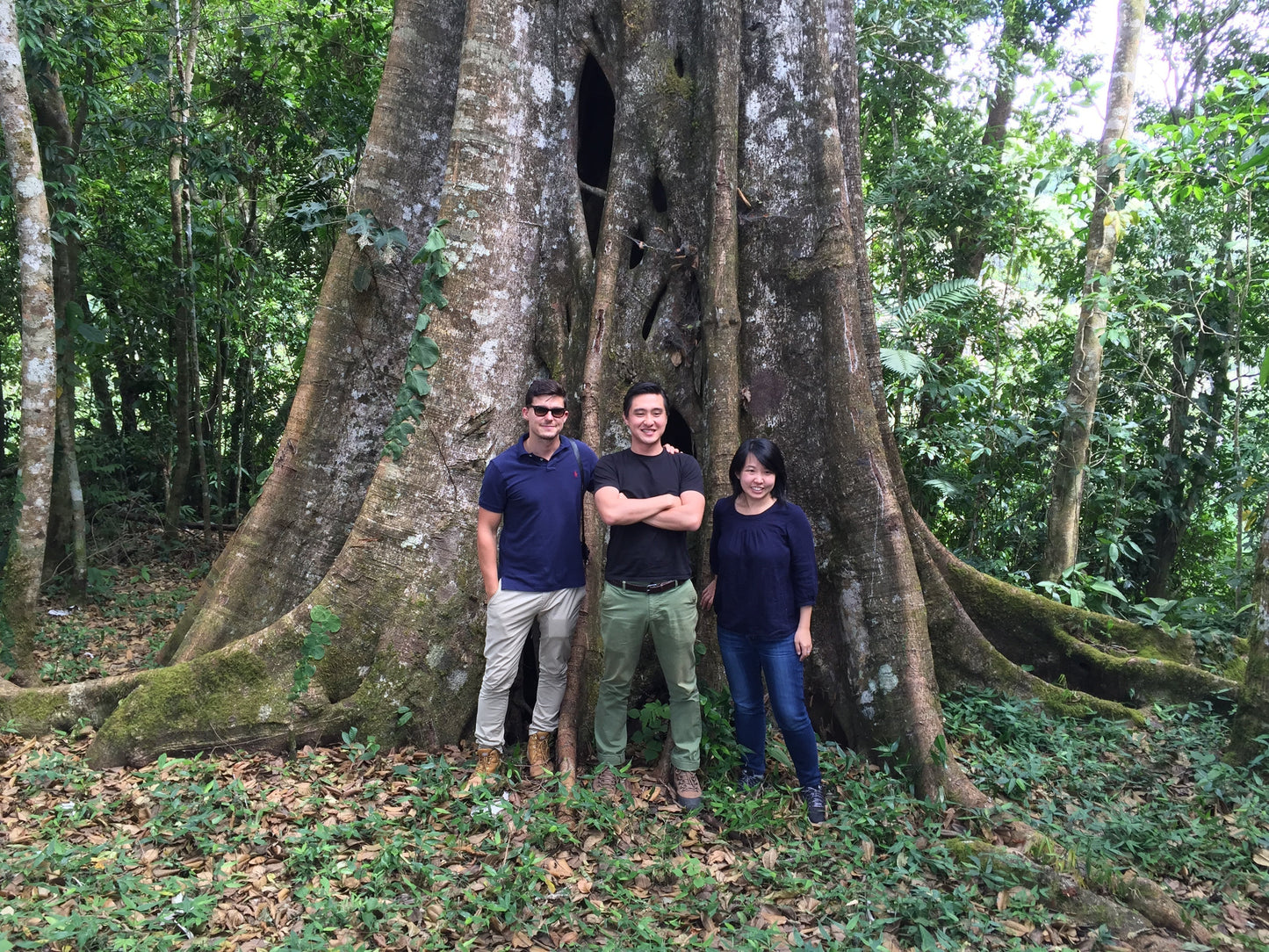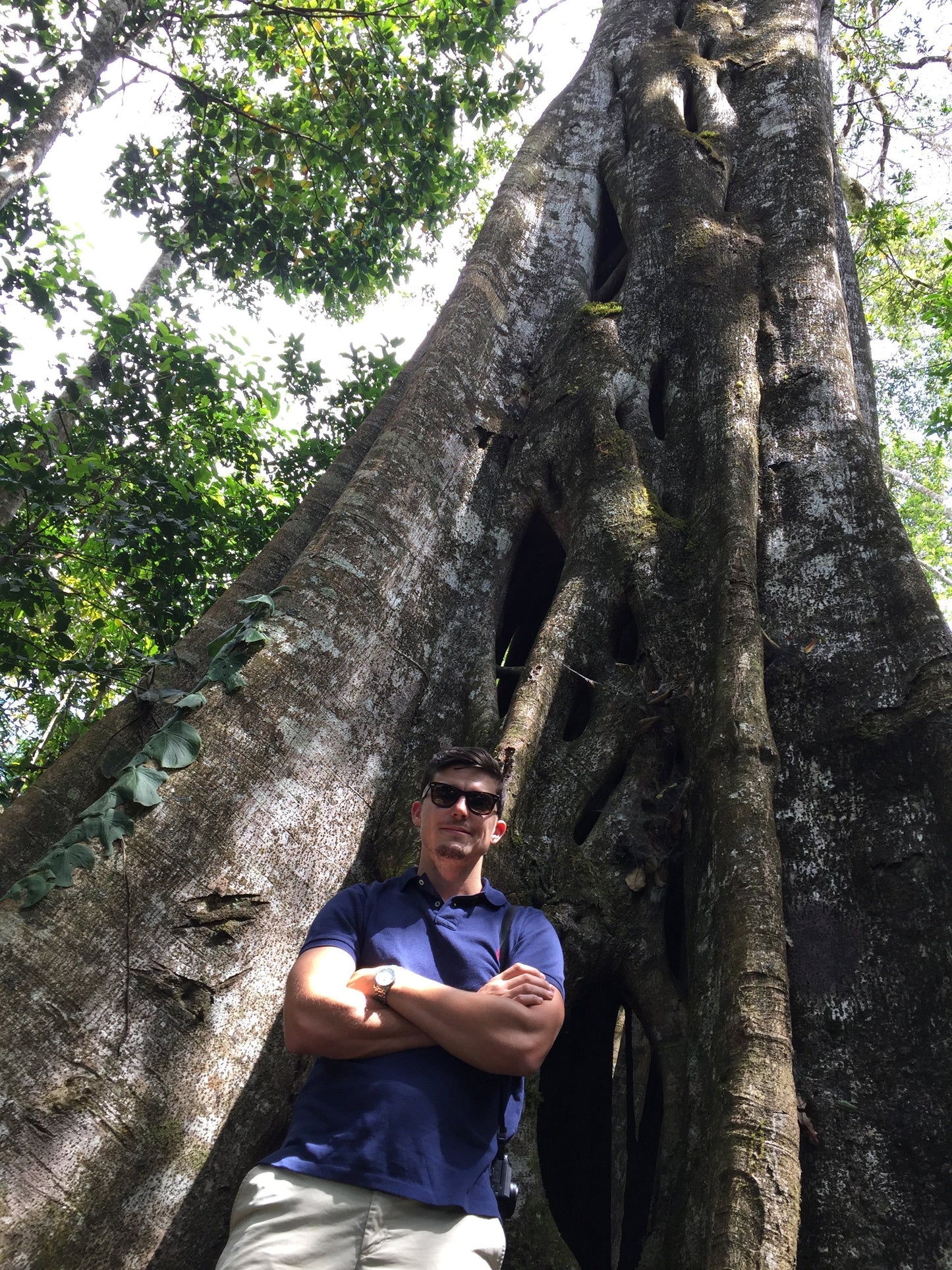











Are you looking to buy Panama | Hartmann Estate | Geisha Natural #8109 | Signature Series in Australia?
-
Tasting Notes/Sensory: Mango, Tea Rose, Strawberry, Honey
SCA Score: 86.5
Suitable with Milk? NO
Roast Level: Light
AGTRON: 68Roasted Level Suits: FilterPROCESSING: Natural
VARIETAL: GeishaFARM/COOP/STATION: Hartmann Estate
ALTITUDE: 1,260 to 1,500 meters above sea level
OWNER: Hartmann family
SUBREGION/TOWN: Santa Clara, Renacimiento, Candela
REGION: Chiriqui
HARVEST MONTHS: December 2022 - March 2023This lot from the Hartmann family is comprised of Geisha, an impressively high-scoring variety loved for its floral and nuanced flavors.
Central Coast Coffee Brew Recipe
We are aiming for a 22.5-23.5% extraction with this coffee for our preference in taste.
We are using the Clever Dripper Brewer and using Samo Bloom Brewing method.
We are grinding on the Acaia Orbit SSP burrs on 10
- 15g coffee, ground medium-fine (slightly finer than typical V60 grind)
- 250g water, divided into two temperatures:
- Initial Bloom: 50-60°C
- Subsequent Pour: 95°C
Steps
- 0:00: Pour 45g of water at 50-60°C for the bloom.
- Immediately after pouring the 45g: Increase kettle temperature to 95°C.
- 0:00 - 2:00: Bloom phase
- 2:00 - 2:20: Continuous pour phase. Use these checkpoints to guide your pour rate:
- 2:05: Total water should reach 100g.
- 2:10: Total water should be 150g.
- 2:15: Total water should be 200g.
- 2:20: Finish with a total of 250g.
- 2:20 - 2:25: Gently swirl.
Total Brew Time: Approx. 3:30. Adjust grind for taste/time. Too fast/acidic = finer; too slow/bitter = coarser.About Hartmann Estate
The Hartmann family patriarch, Alois St. Hartmann, was born in Czechoslovakia in 1891. In 1914, at the onset of First World War, Hartmann emigrated to Pennsylvania in the United States where he changed his name to Luis Hartmann. Hartmann later purchased land in Chiriqui in Panama and built a house. On that land, Hartmann began growing the first coffee trees on the Hartmann Estate.
Direct descendants of Luis Hartmann own and manage the estate today. Third generation Ratibor Hartmann manages the business and each of his four siblings oversees a specific aspect of the farm. There is a warm family vibe at this estate and issues are resolved smoothly in a way that you can tell that this family has lived together all their lives.
After harvest, cherry is visually inspected to remove damaged or over- and under-ripes and then laid on raised beds to sundry. Raised beds allow for better airflow throughout drying that help prevent over-ripening, fermenting or spoiling. Cherry is raked frequently to ensure even drying.
Geisha (also known as Gesha) is known for its exceptional cup quality, especially when grown at high altitudes. The variety comes from Ethiopian landrace coffees and was collected from Ethiopian coffee forests in the 1930s. The name supposedly derives from Ethiopia’s Gori Gesha forest.
There is some confusion with several genetically distinct varieties that have all been called Geisha, but the most famous variety is the Panama one. The variety was brought to Lyamungu research station in Tanzania and from there to Centro Agronómico Tropical de Investigación y Enseñanza (CATIE) in Central America in 1953. At CATIE, the variety was logged as T2722. CATIE distributed T2722 across Panama in the 1960s for its Coffee Leaf Rust (CLR) resistance, but its brittle branches meant it was not widely planted.
Panama Geisha reached its modern fame in 2005 when a Geisha lot won the “Best of Panama” competition and broke contemporary records at over $20/pound. DNA analysis has demonstrated that the Panama Geisha descended from T2722 is distinct and uniform. Today, Geisha is known for its delicate florals, jasmine and stone fruit.
About Geisha Varietal
Geisha (also known as Gesha) is known for its exceptional cup quality, especially when grown at high altitudes. Geisha was first discovered in Abyssinia, Ethiopia in 1931. Geisha was planted in Panama for the first time in 1963 and in Colombia in 2005 - The name supposedly derives from Ethiopia’s Gori Gesha forest.
There is some confusion with several genetically distinct varieties that have all been called Geisha, but the most famous variety is the Panama one. The variety was brought to Lyamungu research station in Tanzania and from there to Centro Agronómico Tropical de Investigación y Enseñanza (CATIE) in Central America in 1953. At CATIE, the variety was logged as T2722. CATIE distributed T2722 across Panama in the 1960s for its Coffee Leaf Rust (CLR) resistance, but its brittle branches meant it was not widely planted.
Panama Geisha reached its modern fame in 2005 when a Geisha lot won the “Best of Panama” competition and broke contemporary records at over $20/pound. DNA analysis has demonstrated that the Panama Geisha descended from T2722 is distinct and uniform. Today, Geisha is known for its delicate florals, jasmine and stone fruit.
Coffee in Panama
- Though small in coffee production, Panama is a mighty player in coffee quality. In particular, Panama is famous for producing Geisha variety lots that have fetched prices exceeding $800 per pound. Today, its renown as a producer of rare and sought-after varieties positions Panama as a contender for a new kind of ‘coffee-tourism’ that has the potential to change the way we produce, purchase, consume and talk about specialty coffee on a global scale.
The high value of Geisha has brought out both the best and worst in the industry. For established producers who receive excellent prices for their Geisha and other lots, the high prices they receive have often been reinvested in their communities and in renovating their farms to be as environmentally sustainable as possible. Unfortunately, the lure of Geisha’s high value has led some people bypass traditional land purchasing agreements and illegally deforest areas of national parks to get the best location for new (and illicit) Geisha farms.
Even as the number of producers those receiving high prices for their Geisha remains relatively low, the blossoming coffee industry in Panama has demonstrated potential to raise incomes for a wider spectrum of producers and coffee workers.
SKU: panama_hartmann_160g
Package Weight: 250g












